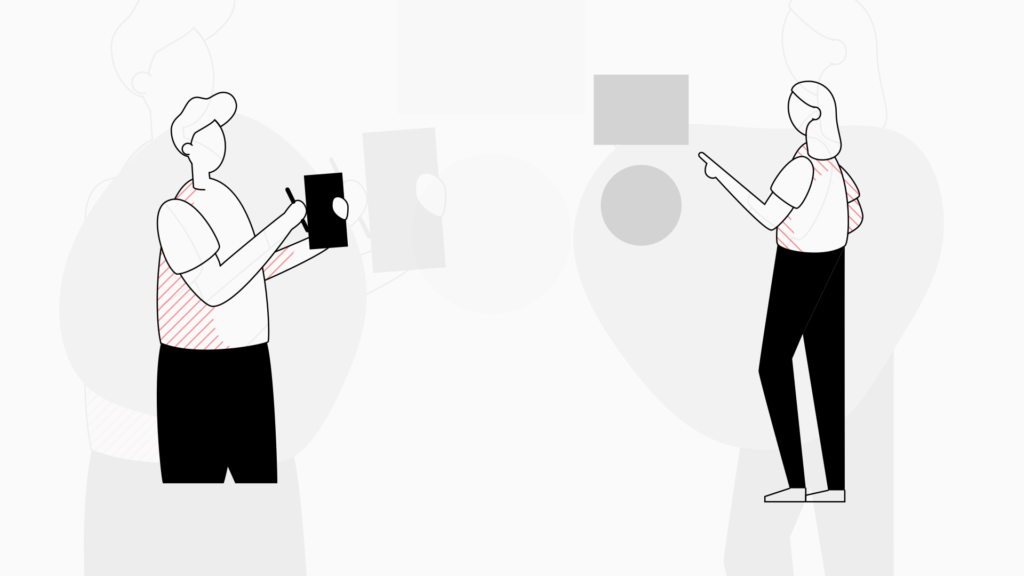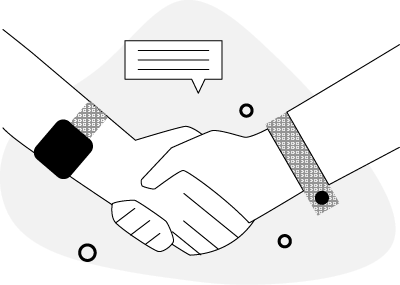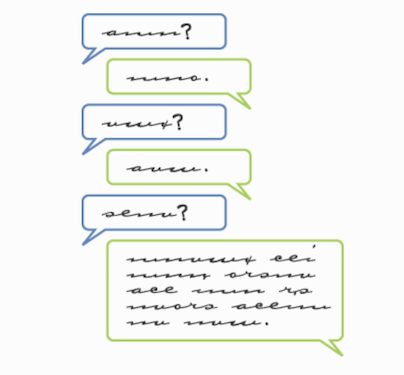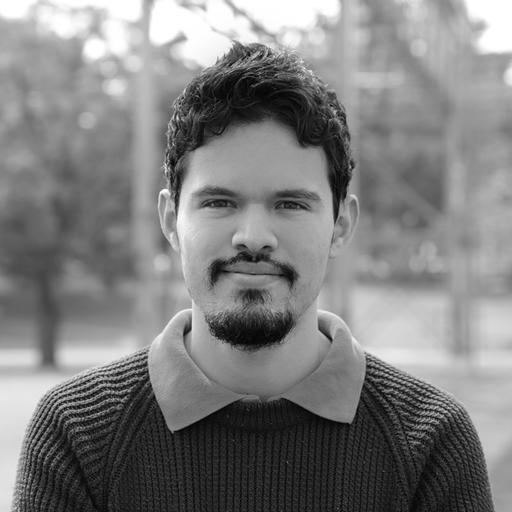The first time I came across the concept of behavior as the medium of design by Robert Fabricant, it really hit home.
As a designer, it is easy to fall into the trap of focusing only on the creation of artifacts and prototypes to communicate the vision of the to-be experience – the world as a better place.
But if the solution does not fit into the lives of the people it is meant to serve, if it does not consider the behaviors associated with the problem it’s trying to solve, the design will be rendered obsolete.
Design is a catalyst for change. As Karl Fast says, “Design helps us know the possible; the world as it might be. It’s a mechanism for exploring, evaluating, and shaping the future.”
However, shaping the future is anything but a trivial endeavor, as designers need to correctly predict the way people will interact with the design.
Do they find value in using it?
Do their mental models match with the conceptual model the design team envisioned?
Fortunately, we don’t need to travel to the future to answer these questions. We can do an extrapolation exercise by considering the best predictor of future behavior: current behavior.
Making the Case for Interviews
Interviewing is one of the best research techniques designers can rely on to uncover not only behaviors but also the motivations and frustrations of the people who have influence over a project.
Through interviews, designers explore the uncharted territory that represents gathering insights from the business, technology, and human perspective, in order to make better design decisions and enable a fair exchange of value between users and organizations.
But interviewing entails more than scheduling sessions with participants and asking a series of predefined questions. It requires designers to develop what Indi Young defines as cognitive empathy: discovering the underlying thoughts and emotions that guide someone else’s decisions and behaviors.
The first step towards cognitive empathy is being fluent in active listening.
“Converse like a talk show host, think like a writer, understand subtext like a psychiatrist, have an ear like a musician.”
– Lawrence Grobel
Why Listening is Hard
Deep, active listening has never been a survival skill for humans. The homo sapiens species managed to persist during 70,000 years without the need to allocate mental resources to listen and understand other members of the group. We are far more comfortable speaking, because it makes us feel in control of the situation. In of the most popular TED Talks of all the time, author and radio host Celeste Headlee elaborates:
“The average person talks at about 225 words per minute, but we can listen at up to 500 words per minute. So our minds are filling in those other 275 words. […] It takes effort and energy to actually pay attention to someone.”
Types of Listening
In addition to her stellar TED Talk, Celeste also sheds some light during a conversation with Shane Parrish about the different layers of listening humans can have:
Evaluative listening: When someone responds immediately to what someone says with their judgment.
Interpretive listening: When there’s an active interpretation — you’re trying to understand.
Transformative listening: Listening with the willingness to change your mind and consider other points of view.
“Most of us don’t listen with the intent to understand, we listen with the intent to reply.” — Stephen Covey
It is transformative listening that designers should strive for during interviews, in order to honor the interviewees and learn as much as possible from them.
Applying Interviewing to Different Situations
Interviewing is an activity you can conduct in a wide variety of scenarios, depending on your research questions. The following are some of the most common interview types within the UX discipline.
Interviewing Users
Talking to current or potential users of your product can help you uncover the underlying behaviors, motivations, goals, and frustrations they might experience when trying to make progress in their lives, as well as avoiding designing for yourself and letting go of your own biases.
Interviewing Stakeholders
Stakeholders — people who have an influence over the outcome of the project — can provide essential information to set the direction of the project up success. During the initial phases of a project, it is important to gather insights regarding the organization you’re working with, how decisions are made, the way they operate and collaborate, business goals and metrics, definition of success, competitors, to name of few.
Interviewing During Usability Tests
A lot of folks consider usability tests a technique focused only on learning about the product. However, there is always something we can learn from users, and more importantly, in order to successfully extract insights, a labor of moderation needs to be taken into account to put the user into the right thinking aloud mindset.
Leveling up as an Interviewer
The following advice is the distillation of my learnings through conducting and witnessing more than 100 interviews, as well as the gatherings collected from almost 10 books focused on user research.
Before the Interview
Prior jumping out and start asking questions to participants, you need to plan your research project. Otherwise, it doesn’t matter how many valuable insights you obtain, it will be hard to translate them into design decisions if you don’t state a research goal and research questions first.
Some questions you might ask yourself when planning your interviews:
- What are the research questions I need to answer through interviews?
- What does the team know about the organization, users and product?
- What are some of the potential assumptions we’re making and how could we reduce uncertainty?
Tomer Sharon has a great resource of a one-page research plan you can leverage to lay out the foundation of your research efforts.
You can also download my interview guide for free, which contains script templates, types of questions, and best practices for interviewing.
Schedule a Dry Run
One of the biggest mistakes I caught myself doing over and over was not scheduling the right amount of time for interviews, which led to rushing the interviews at some times and not learning enough.
Dry runs or pilot tests can give you a fair sense of duration of an interview, as well as helping to validate whether the structure of your interview script facilitates a natural flow of conversation.
During the Interview
Set Proper Expectations
It is highly likely that your participants will not be familiar with the mechanics of the interview, as it is not something people are used to doing on a daily basis. What they might do is to try to associate it with something they are familiar with, such as a conversation or a demo. The best thing you can do is set expectations upfront so they can feel more confident about what is going to happen. You can include in your field guide something like:
“You might already know why are we here, but let me go over it again. We’re currently [insert your high-level goal here] and it is extremely valuable for us to have perspectives such as yours, in order for us to learn more. That’s why I’ll be asking you some questions, but this doesn’t mean I will be testing you, I just want to learn from your experience. There are no right or wrong answers.”
Rapport Does Not follow an Agenda
In order for you to learn as much as possible from your participants, you need them to be articulate, confident, and calm. This is accomplished by successfully building rapport; however, this might take from 5 to 90 minutes to be achieved, depending on the personality of the participant and your interviewing skills. You shouldn’t rush this crucial part of the interview, because if you’re not able to foster an environment of comfort and looseness, the insights from the interview will fall short.
The best way to build rapport is by asking warm-up and contextual questions that the interviewees can feel confident answering, so they build momentum.
This is an example of warm-up questions for an enterprise research project:
- Tell me about your job.
- What does a day-to-day look like?
- Do you have any hobbies?
- What kind of tools do you use on a daily basis?
- How do you work with other teams?
Don’t Mistake Empathy for Equating Experiences
In other words: be interested, not interesting.
While a conversation is a mutual exchange of information, an interview should be time-limited, structured, moderated, and more importantly, the interviewer should ask questions in a way that allows the interviewee to shine, to showcase their expertise.
This is not the moment for you as the interviewer to brag about how much you researched about the subject upfront, or how familiar you feel with the topic. It is the moment to keep the knowledge to yourself and pay attention to what your guests have to say.
Pay Attention to the Unspoken
UCLA Professor Albert Mehrabian conducted a study that revealed that only 7% of what we communicate depends on the content of the message, 38% corresponds to voice (intonation, tone, and volume), while an outstanding 55% can be attributed to body language. This is why is so important as interviewers to develop skills that allow us to read the subtext in our participants and pay attention to their non-verbal communication.
To do so, you need to immerse yourself in the conversation, avoid multitasking, and be mindful of the reactions, facial expressions, and postures your interviewees adopt, as this communication will give you valuable insights about their behaviors.
Embrace Bland Curiosity
In his book Interviewing Users, Steve Portigal mentions how he is often asked about surprising things ever learned during fieldwork, and how he always struggles to answer. This is in part because of bland curiosity — letting go of all the preconceived expectations and beliefs you might have, and embrace every interview with an open mind.
Of course, you cannot leave your research questions aside, but they should help to explore new avenues in the conversation, instead of leading to dead ends.
Alway be always prepared to be amazed.
Strive for Stories
Portigal defines this as the tipping point in the interview, where the flow changes from question-answer to question-story. This is the point of immersion when you can extract more insights from your participants because stories inherently convey meaning, emotion, and detail.
 Image credit: Interviewing users by Steve Portigal
Image credit: Interviewing users by Steve Portigal
In addition, storytelling mode mitigates the risk of participants falling into self-reporting error: when they provide incorrect information, not because of dishonesty, but because their memories or self-perception differs from their actual behavior.
Asking open-ended questions is your golden ticket towards getting your participants into storytelling mode, as you leave room for them to fill in the answer with details that can help you uncover meaningful insights and ask follow-up questions.
Instead of asking: How do you normally purchase online? You can ask: Can you walk me through the last time you purchased something online? This way participants stick to the facts instead of coming up with made-up answers on the spot.
After the Interview
Debrief Immediately
Another bad interviewing habit I made in past interview efforts was to cram too many sessions in one day, thus not allocating enough time for me and my team to actually reflect upon the insights we would hear from the interviews. The potential risk of this is letting learnings to be lost in translation or forgotten.
The recommendation is to allocate at least 5–10 minutes after an interview to reflect back on the findings, so they are better encoded in our brains.
Update your Personas or Models
Once you finish your round of interviews and analyze the findings, you can distill the information just learned by creating or updating your personas if you interviewed users, or your stakeholder maps and service blueprints if you got to talk to stakeholders.
Key Takeaways
Interviewing is a powerful method to develop cognitive empathy and active listening, as well as a great way to let go of your own biases and preconceptions.
Little by little and with practice, your interviewing skills will also permeate your life, and you will become a better listener and a better conversationalist.
Further reading
If you’d like to learn more about the topic of user research, I highly recommend the following.
Interviewing users : how to uncover compelling insights by Steve Portigal
Just enough research by Erika Hall, Jeffrey Zeldman, and Rose Fox
Practical empathy : for collaboration and creativity in your work by Indi Young
We need to talk : how to have conversations that matter by Celeste Headlee
This article first appeared on the UX Collective Medium blog.




 Image credit:
Image credit: 





